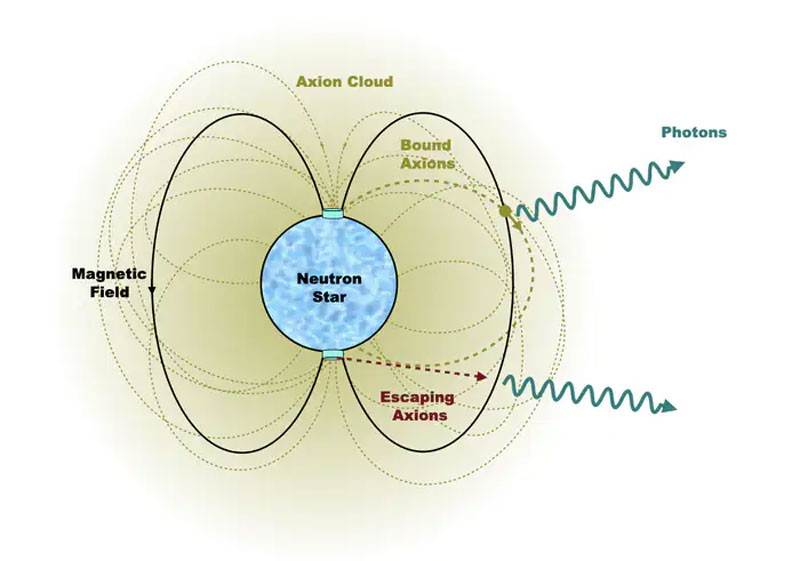A team of physicists from the Universities of Amsterdam, Princeton and Oxford have shown that extremely light hypothetical particles known as axions could appear as large clouds around neutron stars. In this case, axions could provide an explanation for the elusive dark matter and, moreover, they would not be so difficult to observe.

Image source: University of Amsterdam
The work dedicated to axions in neutron stars was published on October 17 in the journal Physical Review X. It was a continuation of the theoretical study of the nature of axions, but unlike the previous work, in which the authors considered the issue of emission of axions by a star, the new work evaluates axions that forever “ hovered” at the star.
Neutron stars create such extreme conditions for matter around and inside them that rare particles can appear there, and matter exhibits fantastic properties. An object measuring 12–15 km contains matter with a mass equal to the mass of the Sun. The dynamo of such an object produces a monstrous magnetic field, and axions are believed to turn into photons in strong magnetic fields.
Axions were proposed about 50 years ago to eliminate a number of inconsistencies in particle physics. In fact, this is a trademark of washing powder (or soap), which is figuratively intended to “wash” the shortcomings of our knowledge clean. In theory, they are very, very light and therefore difficult to observe in nature or in laboratories. More precisely, no one has observed them yet. As the authors of the work justify, we simply did not know where best to look for them. According to scientists, neutron stars are the best object to search for axions.
When they decay into photons, axions emit a weak signal due to their extreme lightness. But such an incredible cloud of axions can accumulate around a neutron star over millions of years that it will emit a continuous and relatively easily detectable signal. Axions will not fall on a neutron star without exception due to their weak interaction with ordinary matter, so axion clouds can be an indispensable attribute of absolutely all neutron stars.
The weak interaction of axions with ordinary matter makes them good candidates for dark matter. According to the team’s calculations, the cloud of axions near a neutron star creates a density in local space that is twenty orders of magnitude higher than the density of dark matter. Observing clouds of axions around neutron stars could unlock many secrets in particle physics and shed light on dark matter. By the way, during the death of a neutron star, a cloud of axions can produce a characteristic colossal flash, which can also be observed by our instruments.
The possibility of the existence of axion clouds also opens up a lot of directions in theoretical physics, from modeling the dynamics of neutron stars taking into account their influence to describing the behavior of the clouds themselves. The foundations for the necessary calculations and observations have already been laid, but additional work is needed, including numerical modeling.